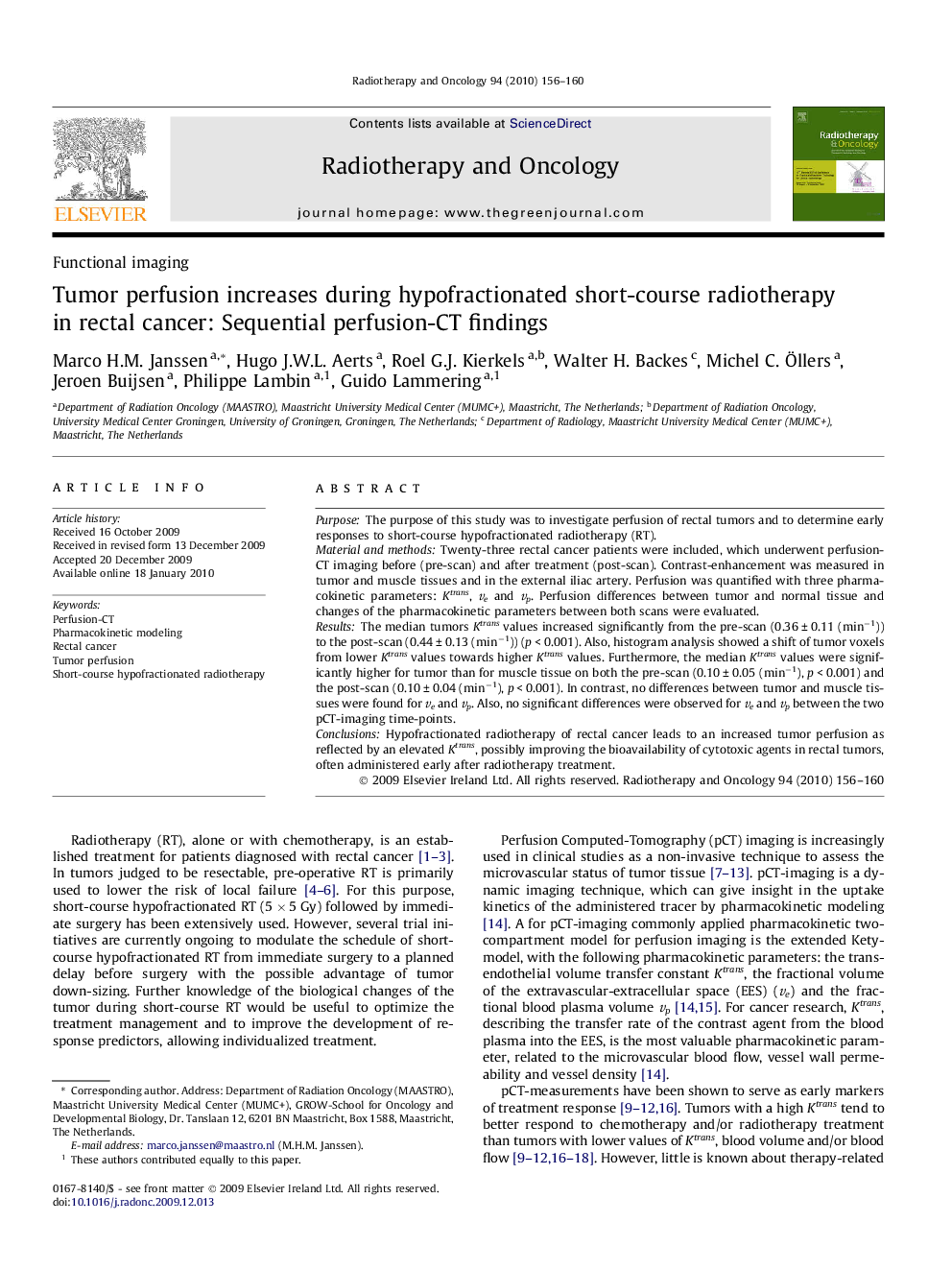| Article ID | Journal | Published Year | Pages | File Type |
|---|---|---|---|---|
| 2159554 | Radiotherapy and Oncology | 2010 | 5 Pages |
PurposeThe purpose of this study was to investigate perfusion of rectal tumors and to determine early responses to short-course hypofractionated radiotherapy (RT).Material and methodsTwenty-three rectal cancer patients were included, which underwent perfusion-CT imaging before (pre-scan) and after treatment (post-scan). Contrast-enhancement was measured in tumor and muscle tissues and in the external iliac artery. Perfusion was quantified with three pharmacokinetic parameters: Ktrans, ve and vp. Perfusion differences between tumor and normal tissue and changes of the pharmacokinetic parameters between both scans were evaluated.ResultsThe median tumors Ktrans values increased significantly from the pre-scan (0.36 ± 0.11 (min−1)) to the post-scan (0.44 ± 0.13 (min−1)) (p < 0.001). Also, histogram analysis showed a shift of tumor voxels from lower Ktrans values towards higher Ktrans values. Furthermore, the median Ktrans values were significantly higher for tumor than for muscle tissue on both the pre-scan (0.10 ± 0.05 (min−1), p < 0.001) and the post-scan (0.10 ± 0.04 (min−1), p < 0.001). In contrast, no differences between tumor and muscle tissues were found for ve and vp. Also, no significant differences were observed for ve and vp between the two pCT-imaging time-points.ConclusionsHypofractionated radiotherapy of rectal cancer leads to an increased tumor perfusion as reflected by an elevated Ktrans, possibly improving the bioavailability of cytotoxic agents in rectal tumors, often administered early after radiotherapy treatment.
